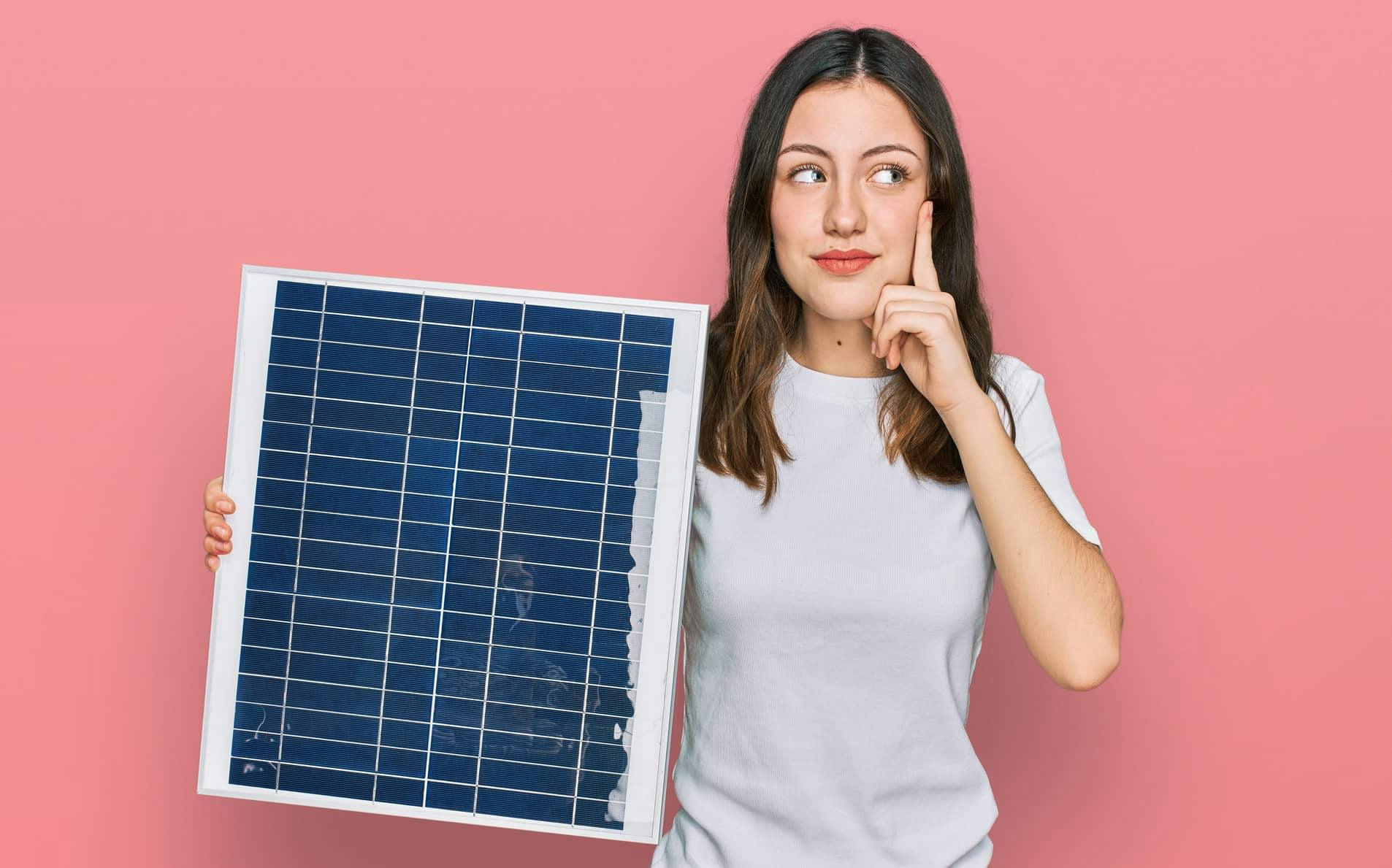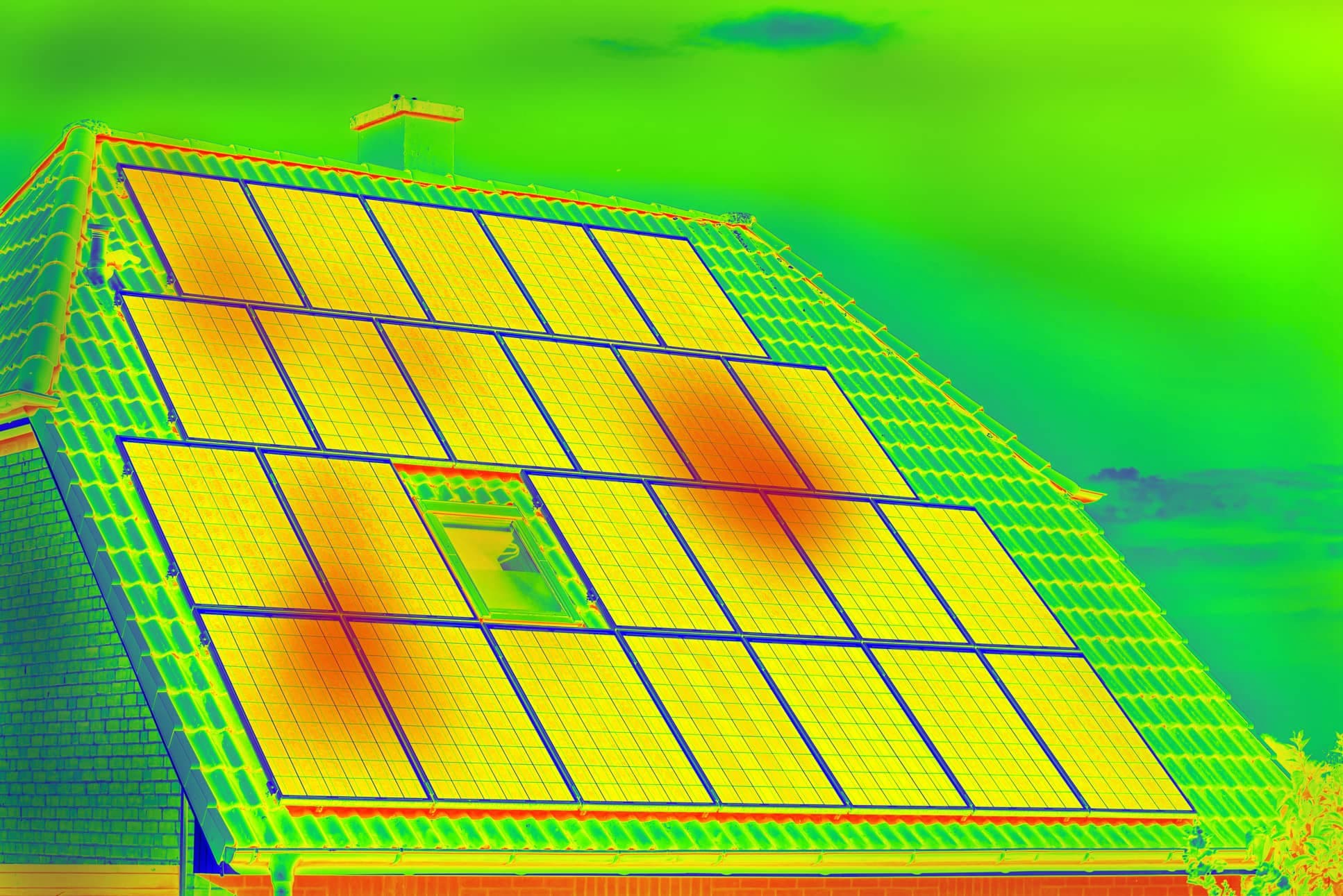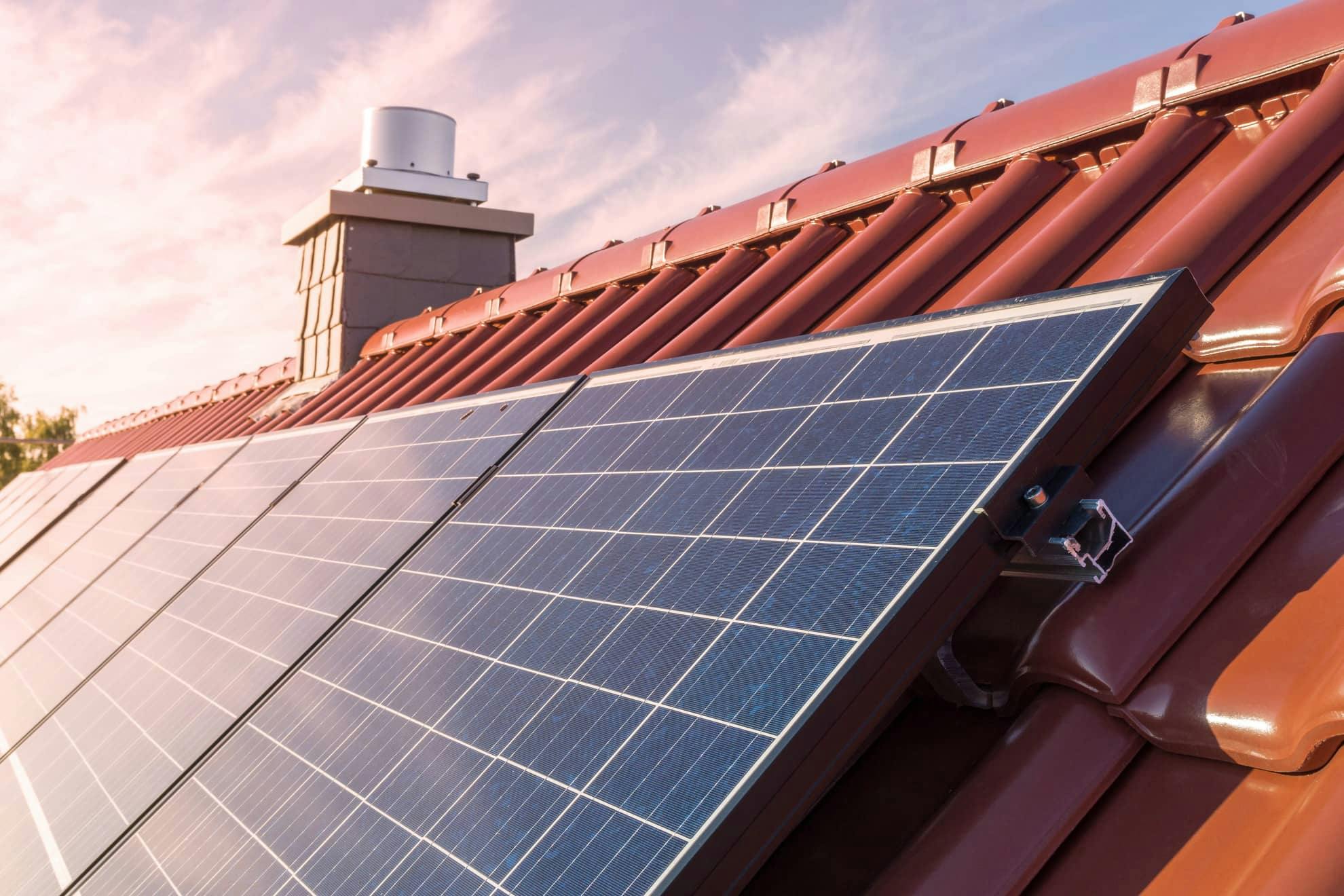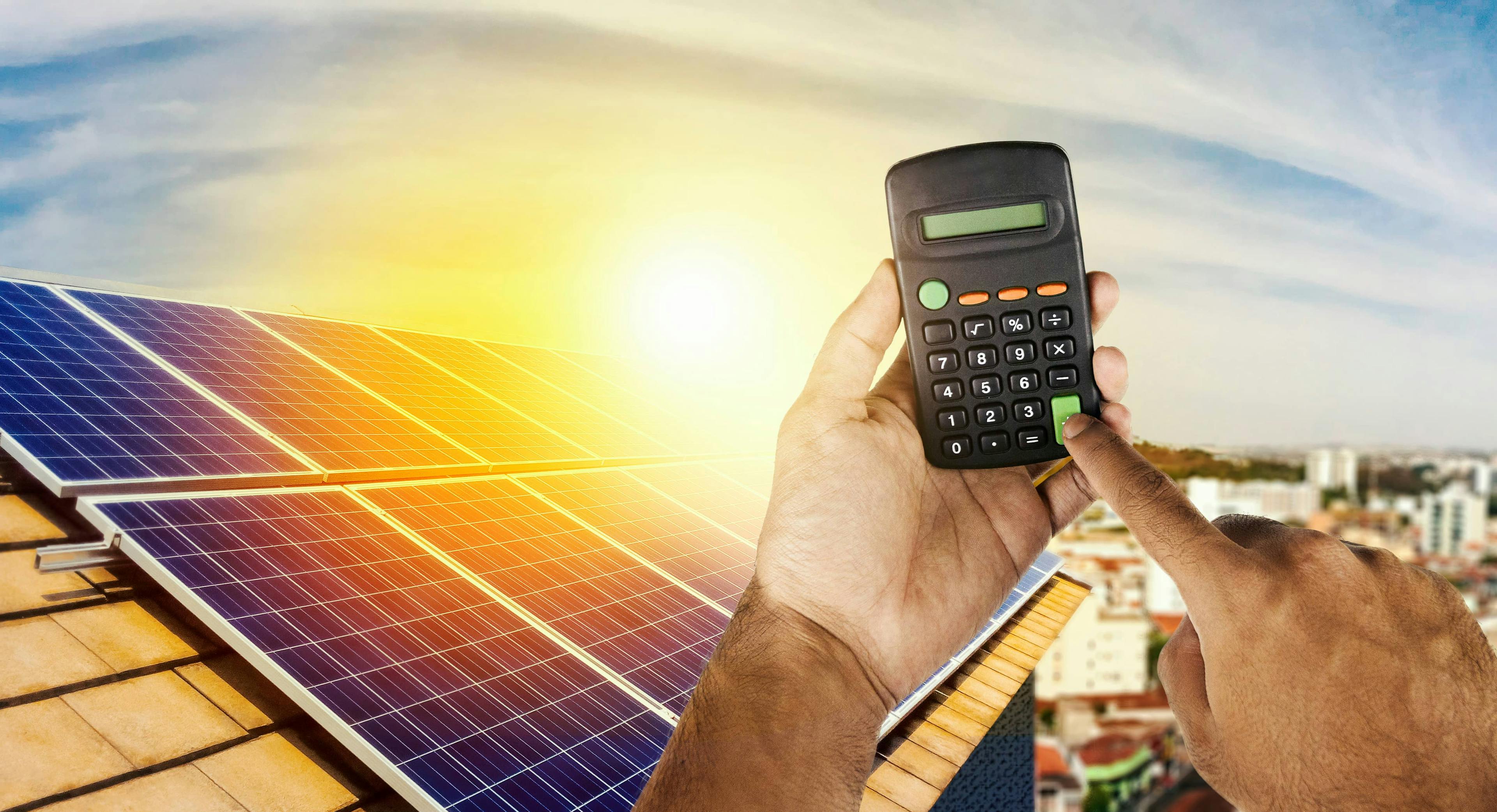Blog index: How many solar panels do I need to/for…?🤔
- charge an electric car
- a 200m2 house
- 10,000W
- 5,000W
- 3,000W
- a refrigerator
- a freezer
- an air conditioner
- a sewage treatment plant
- aerothermal
- be self-sufficient
1. How many solar panels do I need to charge an electric car?
The most appropriate answer will depend on factors such as the contracted power and the charging speed, the geographical location of the photovoltaic installation, and above all knowing how much electricity is necessary for the car to circulate.
In the same way that for gasoline cars the measurement of liters per 100 km is the amount of fuel that it will consume on average to travel 100 km, electric vehicles also have a similar measurement: kWh per km. This varies between electric cars, but on average most electric cars will get around 6 km of range with 1 kWh of electricity in their battery pack.
As we've mentioned, the number of miles an electric car can drive per kilowatt-hour of stored electricity varies. Some examples in descending order are:
🚘🔌Tesla Model 3: 7 kilometers
🚘🔌Chevrolet Bolt: 6.4 kilometers
🚘🔌Mitsubishi i-MiEV: 6.3 kilometers
🚘🔌Nissan Leaf 2016: 5.7 kilometers
On average in Spain around 12,000 km per year (32 km per day) are driven. So if we get 5 km of range for every kWh of charging in the car, it will use almost 8 kWh per day.
It is likely that you already know approximately how many kilometers you drive per year, so we recommend that you base your estimates on that figure and not on the average and example that we are giving.
So, for example, if we have an electric car with a 50 kWh battery that gives us a range of 340 km, and we drive 10,000 km a year, we will consume 1,470 kWh of energy per year (10,000 km x 50 kWh / 340 km), so it will be necessary to install 4 solar panels capable of producing 370 kWh annually each.
2. How many solar panels do I need for a 200m2 house?
In a 200m2 house with four people and an approximate annual consumption of 3,000 kWh, panels that produce those 3,000 kWh of energy will be needed.
Considering that a panel produces an estimate of 730 kWh per year, if we take as an example a 400 W solar panel that receives an annual average of 5 hours of sun per day (an average that compensates the hours of less sun in winter with those of more summer sun).
The solar panel generates 400 W for each hour of Sun, and the calculation to know how much energy it produces would be: 400 W x 5 hours of Sun per day = 2,000 Wh, which is equal to 2 kWh per day. Therefore, 2 kWh per day x 365 days of the year = 730 kWh per year.
The next calculation is to divide those 3,000 kWh per year by what can generate one panel per year (730 kWh) and discover that a house of 200m2 and 4 people could get by with 5 solar panels (3,000 kWh / 730 kWh = 4.1 panels).
However, we want to emphasize that each case (and each household) is very different in its consumption habits, the amount of annual consumption, the orientation and geographical location, and the annual hours of sunshine it receives.🏡
3. How many solar panels do I need for 10,000 W? (10 kW)
4. How many solar panels do I need for 5,000 W? (5 kW)
5. How many solar panels do I need for 3,000 W? (3 kW)
As we have seen in detail in our Solar Guide, solar systems are sized in kilowatts (kW), that is, by how much electrical power they produce.
For example, a home with 12 solar panels installed on its roof and where each panel is 450 watts (W), the power of the photovoltaic system will be 5.4 kWp:
12 panels x 450 W = 5,400 W = 5.4 kWp considering that 1 kW is equal to 1,000 W
Therefore, we can say that this installation is a 5.4 kWp solar system (peak kilowatts of production in its best conditions). Avoid the temptation (and confusion really) to think that this system will produce 5.4 kW all day, ⚠️ since it will produce this at noon on a perfect sunny day (clear and sunny skies but not too hot).
Then:
⚡For 10 kW or 10,000 W = 22 panels of 450 W
⚡For 5 kW or 5,000 W = 11 panels of 450 W
⚡For 3 kW or 3,000 W = 7 panels of 450 W
6. How many solar panels do I need for a refrigerator?
The refrigerator is the appliance that consumes the most energy in the home and represents 14% of the total electricity consumption in your home, according to data from Red Eléctrica Española.
The exact amount of solar energy you need depends mainly on the energy consumption of your refrigerator and your location. In addition, the annual energy consumption of a refrigerator depends on its energy efficiency category:
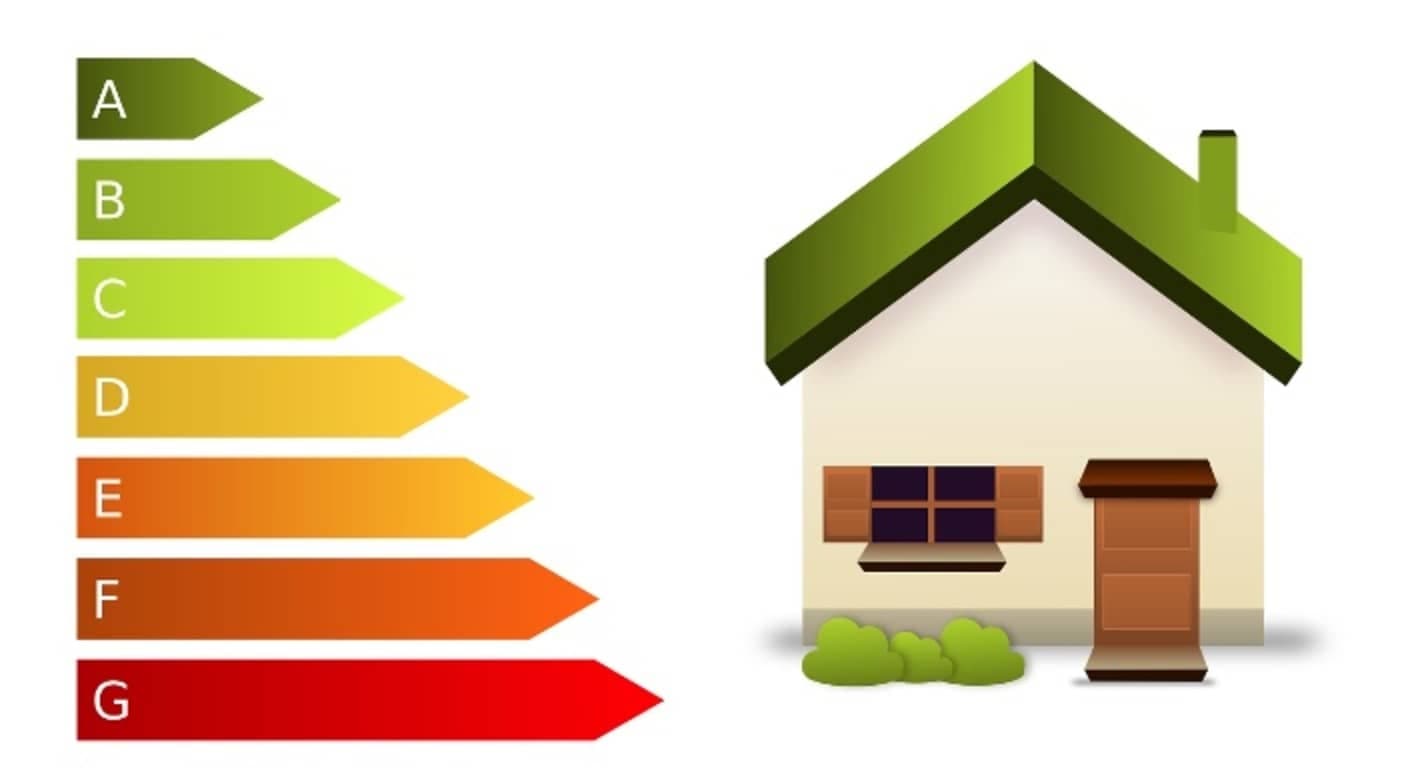
Energy efficiency in household appliances. Low consumption and high power consumption.
Low consumption refrigerators (those classified with energy label A - C) consume around 200 kWh per year, and those with higher consumption (energy label D - G) consume an average of 500 kWh per year.
To produce this necessary solar energy, at least a 300 W photovoltaic panel is needed.
Let's see it below:
If we need panels that produce those 200 and 500 kWh of refrigerator consumption on average per year and we take as an example a 300 W solar panel that receives an annual average of 5 hours of sun per day (an average that compensates for the hours of less sun of winter with the sunnier ones of summer), the panel produces an estimated 547 kWh per year.
The solar panel generates 300 Wh for each hour of sunshine, so the calculation to know how much energy it produces per day would be: 300 W x 5 hours of sunshine per day = 1,500 Wh, which is equal to 1.5 kWh per day. Therefore, 1.5 kWh per day x 365 days of the year = 547 kWh per year and the demand for the refrigerator was 200 and 500 kWh per year.
Remember that this is an appliance that works all day (even when the Sun is not there and the solar panels no longer produce energy) so it will be necessary to add battery (batteries) to the system to store excess of solar energy. Thus, the correct configuration of the battery will allow you to use the energy of your photovoltaic solar system during the day and, during the afternoon and at night, the electricity stored in the battery.
7. How many solar panels do I need for a freezer?
According to the Organization of Consumers and Users (OCU), a freezer consumes approximately 500 kWh per year, although we already know that this will depend on the energy efficiency of the appliance and its use.
Taking as an example a solar panel of 300 W of power that receives an annual average of 5 hours of Sun per day (an average that compensates the hours of less sun in winter with those of more sun in summer), the solar panel generates for each Sun hour 300 Wh.
The calculation to know how much energy it produces in a day would be: 300 W x 5 hours of Sun per day = 1,500 Wh, which is equal to 1.5 kWh per day. Likewise, per year it produces 1.5 kWh x 365 days = 547 kWh.
With this example, at least a solar panel with 300 W of power will be needed and the system will produce 1.5 kWh per day and 547 kWh per year, to satisfy the demand of 500 kWh of annual consumption of the freezer.
As in the previous case, remember that this is an appliance that works all day (even when the Sun is not there and the solar panels no longer produce energy) so it will be necessary to add battery (batteries) to the system to store the excess energy of solar energy. Thus, the correct configuration of the battery will allow you to use the energy of your photovoltaic solar system during the day and, during the afternoon and at night, the electricity stored in the battery.
8. How many solar panels do I need for an air conditioner?
As we have already seen, the number of panels will depend on the amount of energy that the electronic device needs, in this case, the hot/cold air conditioning.
If a split air conditioner has an average consumption of 1 kWh, and you turn it on 4 hours a day during the hottest and coldest months, then 1 kWh x 4 h = 4 kWh of consumption per day x 30 days = 120 kWh per month x 8 months = 960 kWh of total consumption.
Taking as an example a solar panel of 300 W of power that receives an annual average of 5 hours of Sun per day (an average that compensates the hours of less sun in winter with those of more sun in summer), the solar panel generates for each Sun hour 300 Wh.
The calculation to know how much energy it produces in a day would be: 300 W x 5 hours of Sun per day = 1,500 Wh, which is equal to 1.5 kWh per day. Likewise, a year produces 1.5 kWh x 365 days = 547 kWh produces a solar panel.
With this example, at least 2 solar panels of 300 W of power will be needed and the system will produce 3 kWh per day and 1,095 kWh per year, to satisfy the demand of 960 kWh of annual air conditioning consumption.
9. How many solar panels do I need for a treatment plant?
A pool treatment plant consumes approximately 500 Wh (0.5 kWh) and assuming that it works for 5 hours a day, daily for approximately 3-4 months: 0.5 kWh x 5 h = 2.5 kWh per day x 30 days = 75 kWh per month x 3.5 months = 262 kWh.
You need panels that produce those 262 kWh for approximately 105 days. Taking as an example a 300 W solar panel that receives an average of 6 hours of sun per day (an average that compensates the days with less sun with those with more sun), the calculation to know how much energy it produces would be: 300 W x 6 Sun hours per day = 1,800 Wh which is equal to 1.8 kWh per day. Therefore, 1.8 kWh per day x 105 days = 189 kWh.
With this example, at least 2 solar panels of 300 W of power will be needed and the system will produce 3.6 kWh per day and 378 kWh for those 3 and a half months, to satisfy the demand of 262 kWh of consumption of the treatment plant.
10. How many solar panels do I need for aerothermal energy?
A heat pump installed in a home has an approximate annual electricity consumption of 4,880 kWh.
You need panels that produce those 4,880 kWh. Taking as an example a 450 W solar panel that receives an annual average of 5 hours of sun per day (an average that compensates the hours of less sun in winter with those of more sun in summer), the calculation to know how much energy it produces would be : 450 W x 5 hours of Sun per day = 2,250 Wh, which is equal to 2.2 kWh per day. Therefore, 2.2 kWh per day x 365 days of the year = 803 kWh per year.
The next account is then to divide those 4,880 kWh per year by what can generate one panel per year (803 kWh) and the aerothermal system could manage with 6 solar panels (4,880 kWh / 803 kWh = 6 solar panels).
11. How many solar panels do I need to be self-sufficient?
We already know that the size of a photovoltaic system will be conditioned by factors such as the power of the panels, their performance, the orientation and geographic location of the home, solar irradiation, and consumption habits.
According to the Red Eléctrica de España (REE), Spanish households consume an average of 9 kWh per day and approximately 270 kWh per month, which represents about 3,240 kWh/year.
If your energy requirements were then, for example, 9 kWh per day and 3,240 kWh per year and solar panels with a power of 400 W were installed, then you would need approximately 5 panels to disconnect the home from the electricity grid.
400 W x 5 hours = 2,000 Wh = 2 kWh per day x 365 days = 730 kWh will produce 1 panel annually
So to satisfy the consumption demand: 3,240 kWh / 730 kWh = 5 solar panels
It should be noted that for complete self-sufficiency, battery (batteries) will need to be added to the system to store excess solar energy. The correct battery configuration should allow you to be self-sufficient. During the day, you will use the energy of your photovoltaic solar system and during the afternoon and at night you will be able to use the electricity stored in the battery.
If after reading this article you have any concerns, do not hesitate to contact us. At QuieroSol we offer advice to help you review your particular situation and answer any questions you may have. In addition, we invite you to discover the latest topics and articles on solar energy in our blog. 😉
With QuieroSol compare installers and solar products. You can easily get information like reviews, prices and warranties to make the best decision. Receive multiple quotes on the spot. You only need your consumption and zip code, it's that easy.

